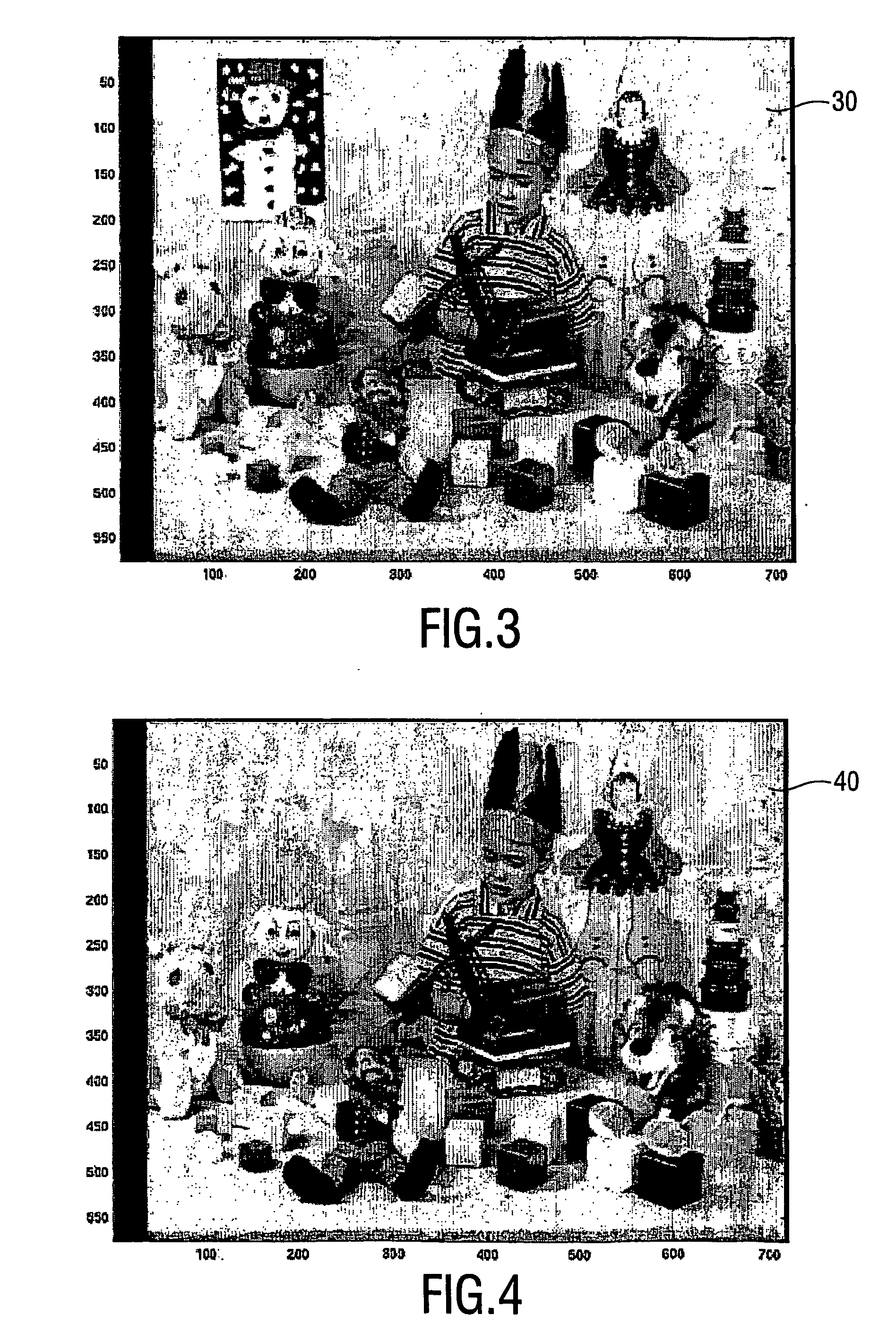Localisation of image tampering
a technology of image tampering and localisation, applied in the field of digital imaging, can solve the problems of complex authentication problem and inadequacies of classical authentication techniques from cryptography, and achieve the effect of improving the localisation of tampered regions
- Summary
- Abstract
- Description
- Claims
- Application Information
AI Technical Summary
Benefits of technology
Problems solved by technology
Method used
Image
Examples
Embodiment Construction
[0035] The invention is described below in detail by means of embodiments described with reference to a surveillance system. However, the invention is by no means limited to these exemplary embodiments referring to the mentioned surveillance system, and the person skilled in the art will readily be aware of modifications and other applications within the scope of the appended independent patent claims.
[0036]FIG. 1 illustrates the layout of a typical surveillance system 1. This consists generally of the following components: [0037] at least one video camera 10, having a video output 11 that usually is in an analogue format, such as PAL or NTSC, [0038] a digital recorder 12, which takes the video inputs from multiple cameras 10 and applies lossy compression, and [0039] a computer network 13 providing storage and retrieval, and [0040] authentication means 14 for the compressed video.
[0041] A variety of compression methods are in use in surveillance systems 1, including both spatio-te...
PUM
 Login to View More
Login to View More Abstract
Description
Claims
Application Information
 Login to View More
Login to View More - R&D
- Intellectual Property
- Life Sciences
- Materials
- Tech Scout
- Unparalleled Data Quality
- Higher Quality Content
- 60% Fewer Hallucinations
Browse by: Latest US Patents, China's latest patents, Technical Efficacy Thesaurus, Application Domain, Technology Topic, Popular Technical Reports.
© 2025 PatSnap. All rights reserved.Legal|Privacy policy|Modern Slavery Act Transparency Statement|Sitemap|About US| Contact US: help@patsnap.com



